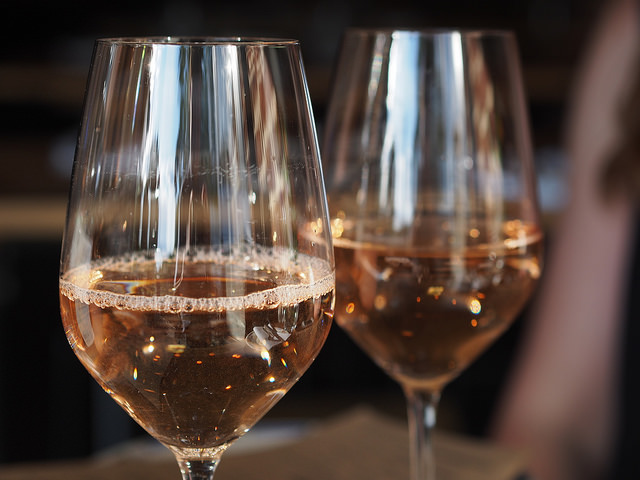
At the Bar: Rosé Wine
Culinary Culture
Learning
From backyard BBQs, rooftop parties, street festivals, and baseball season, we know summer has officially hit when the rosé wine comes out. A perfect middle ground between red and white, rosés are food-friendly, perfect for cocktailing and outdoor events, and pair well with summer’s heat.
All About That Blush
Rosé gets its pink shade by using the common skin-contact maceration method: grapes are crushed and then sit in the juice for a shorter amount of time than red wine until they reach the desired color profile. Not to be confused with White Zinfandel, which is a blend of usually lower-quality grapes with a more fruit-forward palate and a sweeter finish, rosé wines are made from higher-quality red wine grapes like Cabernet and Pinot Noir. They are also noticeably drier with notes of strawberry, honeydew melon, citrus and rhubarb.
France is one of the more popular rosé-producing regions, particularly Champagne, Loire Valley, Provence and southern Rhone Valley. Italy, Spain, Germany, Austria, Portugal and Switzerland, however, shouldn’t be overlooked. California, Oregon and Washington have also become known for their contributions to the varietal.
Fun Fact: Centuries ago, wine had a similar color to rosé since the grapes didn’t macerate as long as they do today giving rosé credit for being the oldest style of wine.
Beyond the Wine Glass
While straight out the bottle is a fine way to drink rosé, it can be used in various methods across the menu. Lov Carpenter, our mixologist, recommends freezing any half-empty bottles of rosé that might be sitting around into ice cubes and then using them in a boozy slushie later on for a great summer treat. We suggest that another great way to use rosé is to make a cold, strawberry lemonade granita. Simply combine simple syrup (equal parts of sugar and water, boiled until reduced), rosé wine, strawberry purée and lemonade and freeze for a few hours or overnight before scraping into a delicious boozy form of Italian ice.
Desserts are also another application for rosé wine like our Grapefruit Rosé Gelée Bites (pictured), which combine grapefruit juice, simple syrup and rosé into an upgraded jello shot garnished with grapefruit pieces, fresh mint and even a gold leaf.

